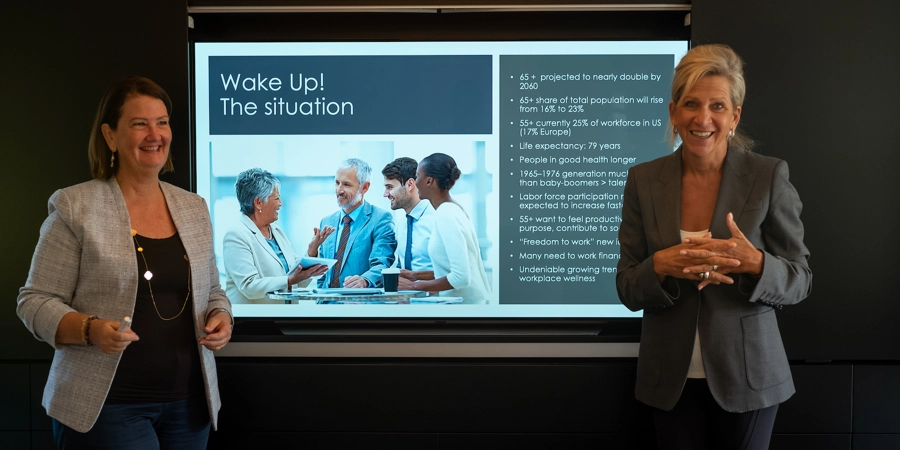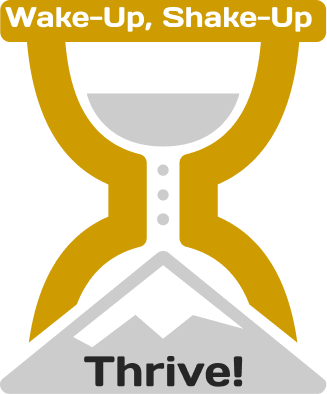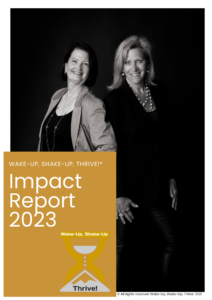If you’ve spent any time recently looking at job postings, you may have encountered terms like “young company” and “ping pong” – and maybe even “kegerator” – scattered throughout the listings.
One view is that these companies are trying to convey their workplace’s energy and a culture where work-life balance becomes blurred. If they make the workplace more fun, people won’t want to leave, right?
If the goal is to ensure a homogenous workplace culture, hiring managers are doing their job.
What if you knew there was a better outcome available?
Imagine a company that can:
- Include a broader group of both agile and experienced employees
- Serve a clientele from different generations
- Attract and retain employees that will ensure sustainable company success
By including AGE as part of your DEI initiatives, your organisation stands out as an industry leader and the kind of company that attracts – and keeps – multi-generational talents. Companies that embrace multiple generations as part of their DEI efforts are halfway there. They recognize the importance of inclusion, but a plan helps them move from a great idea to a practical application that gets results.
At Wake-Up Shake-Up Thrive!, we work with organizations to get them ‘age-ready.’ Working with us, companies successfully support their more experienced employees and inspire the younger one.
Multi-Generational Employees Are Better for Your Business.

Age-diverse workplaces bring together people with complementary abilities, skills, information, and networks. When managed effectively, they offer better decision-making, more-productive collaboration, and improved overall performance — because members are willing to share and learn from their differences.
If more experienced employees act as mentors and share knowledge and experience with younger employees, this can increase the skill set of the entire workforce. On the other side, the younger generation needs to be heard and valued. This doesn’t happen by chance and is built up, consciously.
Another way multi-generational employees can benefit is by practising different communication styles. Groups with various experience levels exercise communication and understanding more than non-diverse groups. Interactions between both employees and client-facing conversations benefit from this variety.
Group Multi-Generational Employees into Teams and Sit Back, Right?
Not even close.
We recently read an excellent article by Lindsey Pollack in which she lists five best practices for building multigenerational teams.
Our favourite is #1: “Promote employee mobility and cross-training.”
Pollack writes, “to optimize employee satisfaction, companies should consider cross-training for different positions with a focus on the development of transferable skills. This will help to keep the younger generations engaged while honoring the experience and tenure of older workers.”
Cross Training:
- Gives your organization durability, agility, flexibility, efficiency, and teamwork.
- Helps promote people from within and keep them engaged.
- Helps acknowledge the skills of your more experienced employees.
You’re cross-training when your company encourages employees to work in a different capacity. It’s the antithesis of outdated “Stay in your lane” and “That’s above my paygrade” thinking. Cross-training also counteracts the problem of one employee keeping essential knowledge to themselves. There’s always that proverbial question: What if you got hit by a bus tomorrow?
Now that you know why having multi-generational employees is a benefit and that cross-training can benefit them and you – as an employer – need to know HOW to implement it into your workplace.
How to implement multi-generational cross-training

Step 1: Identity which transferable skills are most important and find them in your employees.
Consider the kind of skills all employers want, no matter the position or the type of product or service they’re offering. These might include communication, problem-solving, teamwork, creativity, critical thinking, and leadership. (For more on transferable skills, this Forbes article has a detailed breakdown.)
Part of your leadership responsibilities includes knowing the transferable skills your employees already have. Get specific about each employee’s strengths, either on your own or with the help of a direct report supervisor.
Step 2: Match Up Your Employees.
Here is a great place to implement multi-generational collaboration, as different employees of different ages and experience levels will bring different strengths to the partnership – base these pairings and groupings on the employees’ strengths and areas for growth.
Step 3. Communicate the goal or objectives of cross-training to elicit buy-in.
To counter any concern about cross-training such as, “Why do we have to do this?” or “Does this mean they’re looking to train my replacement?,” convey the WHY and HOW cross-training will benefit them, the company, and your clientele.
For example, our clients represent many different generations, so our solutions to their problems should, too. The best way to brainstorm solutions to client problems is to have multiple perspectives.
Also, cross-training brings out employee strengths otherwise not seen in their current day-to-day tasks. Cross-training employees may entail on-the-job training that can help reveal hidden talents with very real prospects for increased compensation.
Cross-training also promotes a hire from within the culture. If an employee leaves the company, a current employee can transition into their role – rather than having to hire from outside the company. This will accelerate the onboarding process and allow the employee to be operational and efficient quickly.
Step 4. Get Ongoing Feedback
Regularly check in with your employees to identify what is and is not working in a cross-training scenario. Course correction is only possible if feedback and check-ins are part of the process.
Go from Knowing to Doing.

Now that you know why age-diverse, cross-trained teams benefit your company and your employees, what is your plan to make both a reality in your organization? Do you have buy-in from top management?
If your company wants to move from knowing multi-generational teams are a benefit to actually reaping those benefits, you may need help to implement them within your company.
It’s the perfect time of year to implement a plan for age-diverse cross-trained teams in your company. While it’s back to school for students, it’s also continuing education for your employees.
We work alongside company leaders to implement a plan and process so your company can be more agile, sustainable and efficient. Find out more about our work with organizations here.
To understand where your company stands when it comes to incorporating age into your DEI initiatives, check out our brief, yet informative quiz here!



